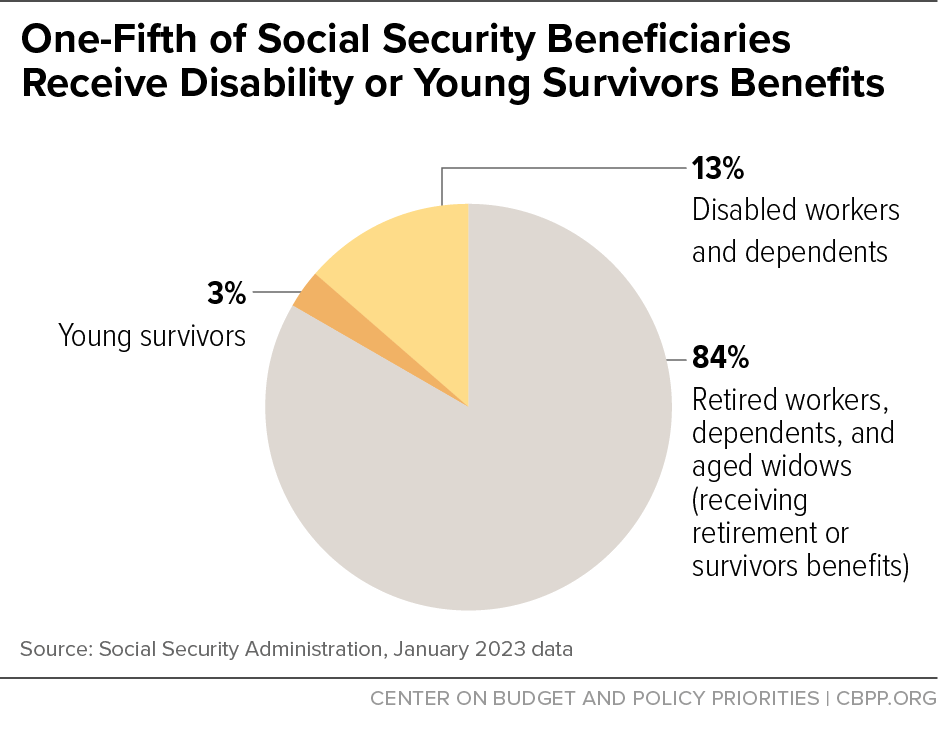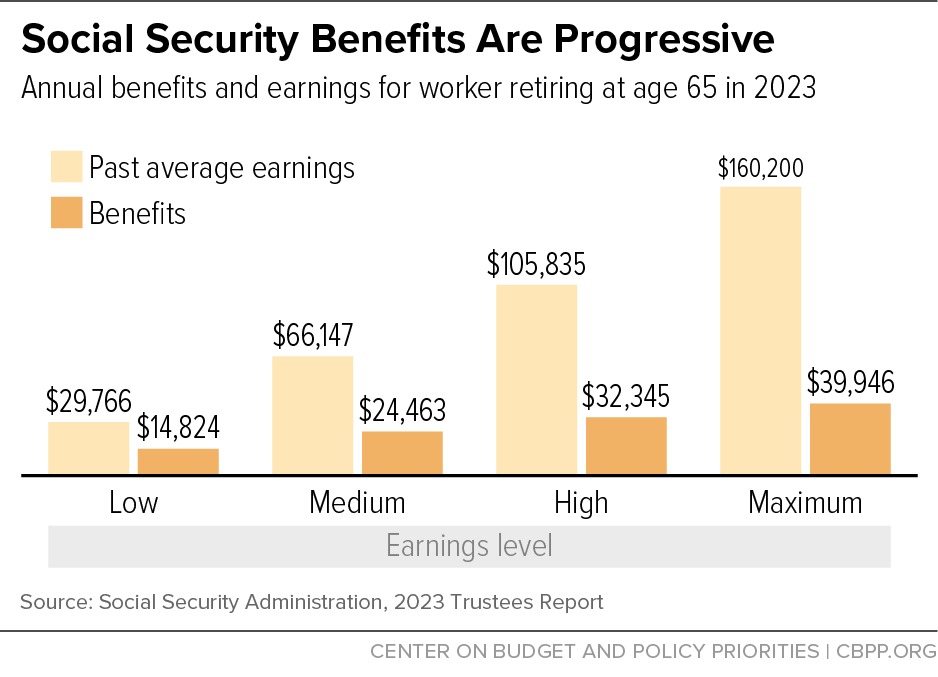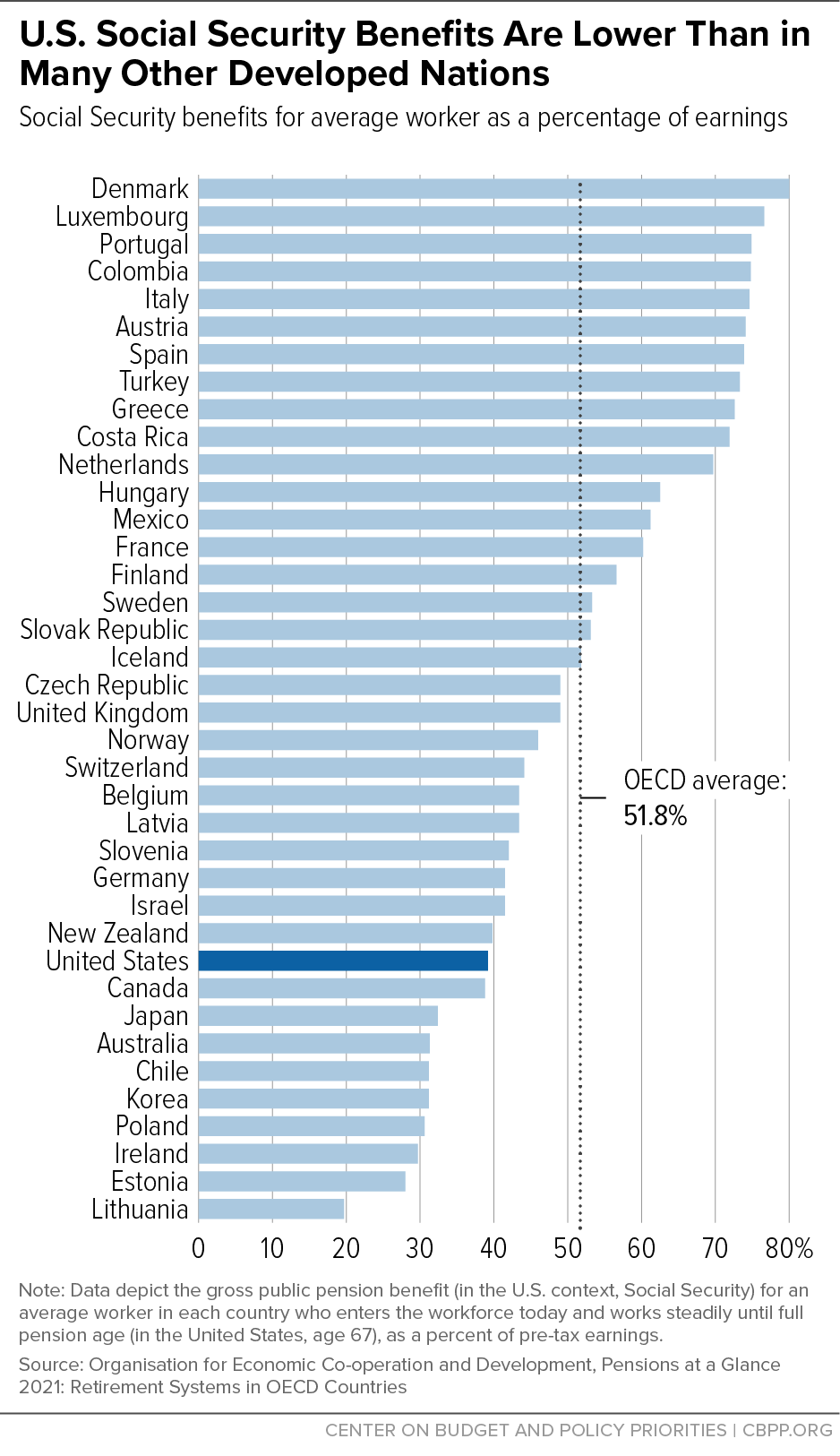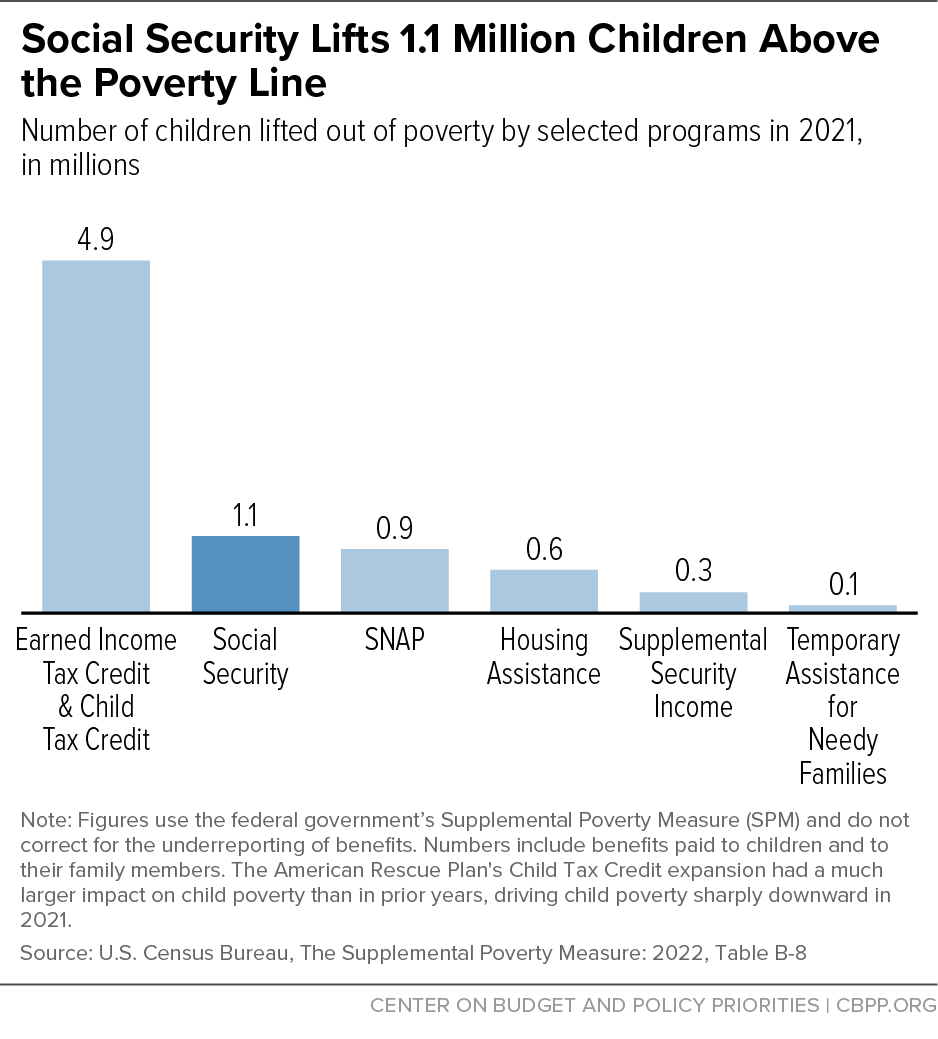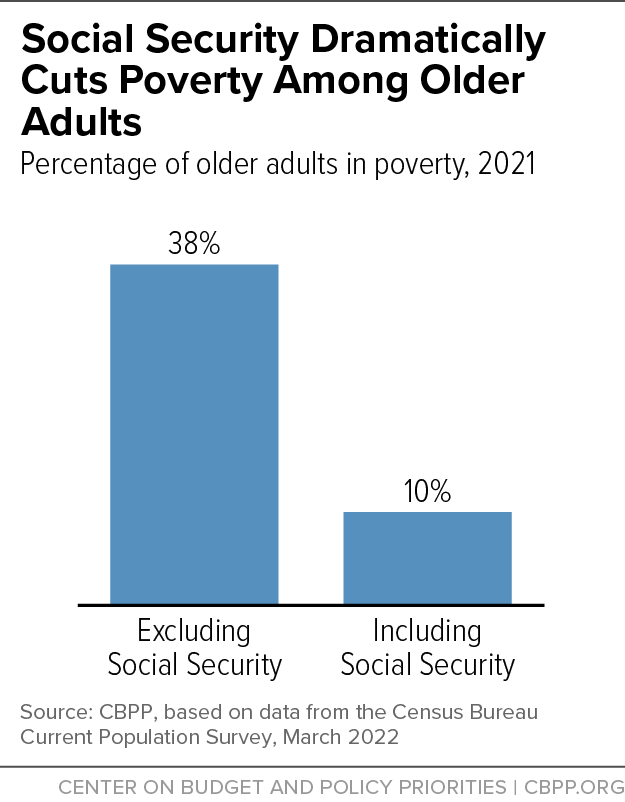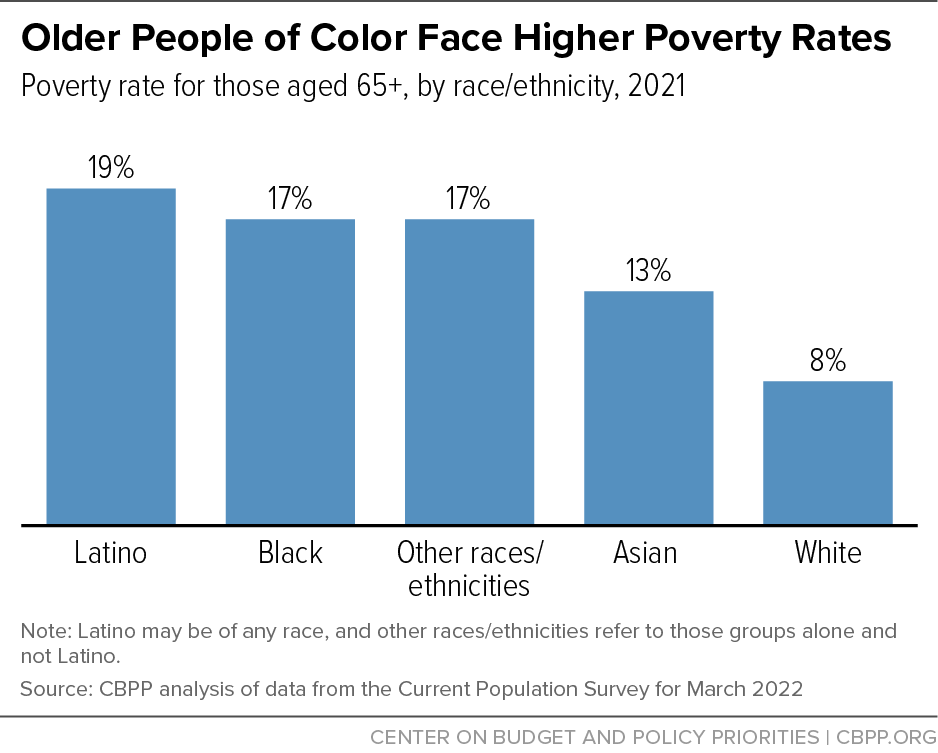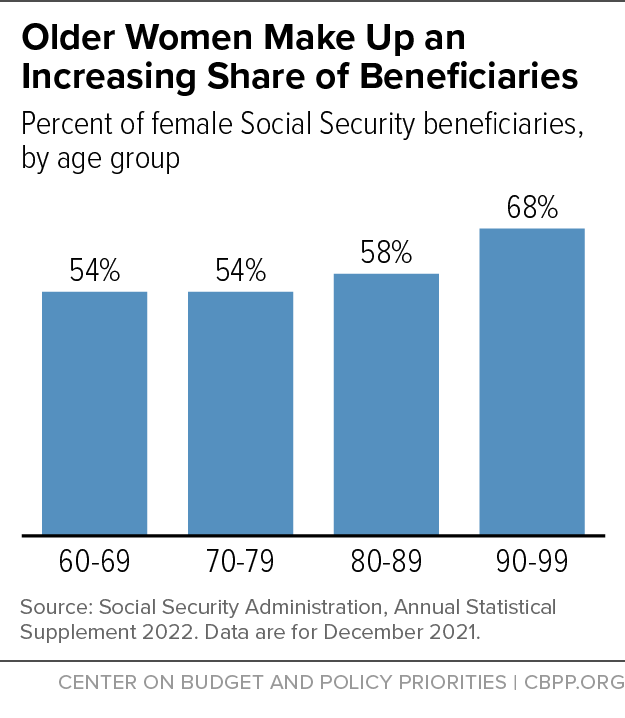- Home
- Top Ten Facts About Social Security
Policy Basics: Top Ten Facts about Social Security
Social Security provides a foundation of income on which workers can build to plan for their retirement. It also provides valuable social insurance protection to workers who become disabled and to families whose breadwinner dies.
Eighty-seven years after President Franklin Roosevelt signed the Social Security Act on August 14, 1935, Social Security remains one of the nation’s most successful, effective, and popular programs.
Fact #1: Social Security is more than just a retirement program. It also provides important life insurance and disability insurance protection.
About 66 million people, or about 1 in every 5 U.S. residents, collected Social Security benefits in February 2023. While older adults make up about 4 in 5 beneficiaries, the other one-fifth of beneficiaries received Social Security Disability Insurance (SSDI) or were young survivors of deceased workers.
In addition to Social Security’s retirement benefits, workers earn life insurance and SSDI protection by making Social Security payroll tax contributions:
- About 97 percent of people aged 20-49 who worked in jobs covered by Social Security in 2022 earned life insurance protection through Social Security.
- For a young worker with average earnings, a spouse, and two children, that’s equivalent to a life insurance policy with a face value of nearly $852,000 in 2021, according to Social Security’s actuaries.
- About 90 percent of people aged 21-64 who worked in covered employment in 2022 were insured through Social Security in case of severe disability.
The risk of disability or premature death is greater than many people realize. Some 8 percent of recent entrants to the labor force will die before reaching the full retirement age, and many more will become disabled.
Fact #2: Social Security provides a guaranteed, progressive benefit that keeps up with increases in the cost of living.
Social Security benefits are based on the earnings on which people pay Social Security payroll taxes. The higher their earnings (up to a maximum taxable amount, $160,200 in 2023), the higher their benefit.
Social Security benefits are progressive: they represent a higher proportion of a worker’s previous earnings for workers at lower earnings levels. For example, benefits for a low earner (with 45 percent of the average wage) retiring at age 65 in 2023 provide $14,824 a year, replacing about half of their prior earnings. But benefits for a high earner (with 160 percent of the average wage) provide $32,345, replacing about 30 percent of prior earnings, though they are larger in dollar terms than those for the low-wage worker.
Many employers have shifted from offering traditional defined-benefit pension plans, which guarantee a certain benefit level upon retirement, toward defined-contribution plans (such as 401(k)s), which pay a benefit based on a worker’s contributions and the rate of return they earn. Social Security, therefore, will be most workers’ only source of guaranteed retirement income that is not subject to investment risk or financial market fluctuations.
Once someone starts receiving Social Security, their benefits increase to keep pace with inflation, helping to ensure that people do not fall into poverty as they age. In contrast, most private pensions and annuities are not adjusted (or are only partly adjusted) for inflation.
Fact #3: Social Security provides a foundation of retirement protection for nearly all people in the U.S.
Almost all workers participate in Social Security by making payroll tax contributions, and almost all older adults receive Social Security benefits. In fact, 97 percent of older adults (aged 60 to 89) either receive Social Security or will receive it, according to Social Security Administration estimates.
The near universality of Social Security brings many important advantages. It provides a foundation of retirement protection for people at all earnings levels. It rewards personal saving and private pensions because it isn’t means-tested — it doesn’t reduce or deny benefits to people whose income or assets exceed a certain level. Social Security provides a higher annual payout than private retirement annuities per dollar contributed because its risk pool is not limited to those who expect to live a long time, no funds leak out in lump-sum payments or bequests, and its administrative costs are much lower.
Universal participation and the absence of means-testing make Social Security very efficient to administer. Administrative costs amount to only 0.5 percent of annual benefits, far below the percentages for private retirement annuities. Means-testing Social Security would impose significant reporting and processing burdens on both recipients and administrators, undercutting many of those advantages while yielding little savings.
Finally, Social Security’s nearly universal nature ensures its continued popular and political support. Large majorities of Americans say they oppose cuts to Social Security because they value it for themselves, their families, and millions of others who rely on it.
Fact #4: Social Security benefits are modest.
Social Security benefits are much more modest than many people realize; the average Social Security retirement benefit in February 2023 was about $1,782 per month, or about $21,384 per year. (The average disabled worker and aged widow received slightly less.) For someone who worked all of their adult life at average earnings and retires at age 65 in 2022, Social Security benefits replace about 37 percent of past earnings. Social Security’s “replacement rate” fell as the program’s full retirement age gradually rose from 65 in 2000 to 67 in 2022.
Most retirees enroll in Medicare’s Supplementary Medical Insurance (also known as Medicare Part B) and have Part B premiums deducted from their Social Security checks. As health care costs continue to outpace general inflation, those premiums will take a bigger bite out of their checks.
Social Security benefits are also modest by international standards. The U.S. ranks just outside the bottom third of developed countries in the percentage of an average worker’s earnings replaced by the public pension system.
Fact #5: Children have an important stake in Social Security.
Social Security is important for children and their families as well as for older adults. Over 6.1 million children under age 18 lived in families who received income from Social Security in 2021. That number included nearly 2.7 million children who received their benefits as dependents of retired, disabled, or deceased workers, as well as others who lived with parents or relatives who received Social Security benefits.
Social Security lifted 1.1 million children above the poverty line in 2021, as the chart shows. (The figures in the chart use the comprehensive Supplemental Poverty Measure to show the full effect of non-cash benefits. These published figures do not correct for underreporting. By the more conventional, cash-only official poverty measure, Social Security lifted 1.1 million children above the poverty line in 2021.)
Fact #6: Social Security lifts millions of older adults above the poverty line.
Without Social Security benefits, about 4 in 10 adults aged 65 and older would have incomes below the poverty line, all else being equal, according to our estimates based on the 2022 March Current Population Survey. Social Security benefits lift more than 15 million older adults above the poverty line, these estimates show.
An important study on retirement income from the U.S. Census Bureau that matches Census estimates to administrative data suggests that the official estimates overstate older people's reliance on Social Security. The study finds that in 2012, 3 in 10 older adults would have been poor without Social Security, and that the program lifted more than 10 million older adults above the poverty line.
No matter how it is measured, it’s clear that Social Security lifts millions of older adults above the poverty line and dramatically reduces their poverty rate.
Fact #7: Social Security is the biggest source of retirement income for most retirees.
Social Security is the largest source of income for most beneficiaries. For 4 in 10 retirees in 2015, it provided at least 50 percent of their income, and for 1 in 7 it provided at least 90 percent of income, according to SSA research that combines survey and administrative data.
Most retirees have modest incomes, save for some at the top of the income spectrum. Most low-income older Americans have very little pension income, if any, according to the U.S. Census Bureau study. Among retiree households in the bottom third of the income distribution, most received no pension income. About 1 in 4 of these households lived on less than $20,000 in 2015, and about half lived on $50,000 or less, according to the SSA study.
Fact #8: Social Security is particularly important for people of color.
Social Security is a particularly important source of income for groups with low earnings and less opportunity to save and earn pensions, including Black and Latino workers and their families, who face higher poverty rates during their working lives and in old age. The poverty rate among Black and Latino older adults is roughly two times as high as for older white adults. There is a significant racial retirement wealth gap, leading older adults of color to face more retirement insecurity than their white counterparts. Black and Latino workers are less likely to be offered workplace retirement plans, and they are likelier to work in low-paid jobs with little margin for savings. Social Security helps reduce the economic disparities between older white adults and older adults of color.
Social Security’s importance to families of color goes beyond retirement. Black and Latino workers benefit substantially from Social Security because they have higher disability rates and lower lifetime earnings than white workers, on average, and Black workers have higher rates of premature death. Persistent racial disparities in health care access and quality — and in access to food, affordable housing, high-quality schools, and economic opportunity — mean Black workers are likelier to become disabled or die before reaching retirement. Latino workers are also more likely to become disabled than white workers and have longer average life expectancies than white workers, which means they have more years to collect retirement benefits.
Fact #9: Social Security is especially beneficial for women.
Social Security is especially important for women, because they tend to earn less than men, take more time out of the paid workforce, live longer, accumulate less savings, and receive smaller pensions. Women represent more than half of Social Security beneficiaries in their 60s and 7 in 10 beneficiaries in their 90s. In addition, women make up 95 percent of Social Security survivor beneficiaries.
Women benefit disproportionately from the program’s inflation-protected benefits (because they tend to live longer than men), its progressive formula for computing benefits (because they tend to have lower earnings), and its benefits for spouses and survivors.
Fact #10: Relatively modest changes would place Social Security on sound financial footing.
Since the mid-1980s, Social Security has collected more in taxes and other income each year than it pays out in benefits and has amassed combined trust funds of about $2.8 trillion, and the excess income is invested in interest-bearing Treasury securities. But Social Security’s costs will grow in the coming years as more baby boomers retire.
The trustees estimate that, if policymakers took no further action, Social Security’s combined Old-Age and Survivors Insurance (OASI) and Disability Insurance trust funds would be exhausted in 2034. After the trust fund reserves are depleted, even if policymakers took no further action, Social Security could still pay three-fourths of scheduled benefits, relying on Social Security taxes as they are collected. Alarmists who claim that Social Security won’t be around when today’s young workers retire either misunderstand or misrepresent the projections. The long-term gap between Social Security’s projected income and promised benefits is estimated at 1.3 percent of GDP over the next 75 years.
Policymakers should address Social Security’s long-term shortfall primarily by increasing Social Security’s tax revenues. Social Security will require an increasing share of our nation’s resources in the coming decades as the population ages, and polls show a broad willingness to support it through higher tax contributions. Recent trends also justify boosting Social Security’s payroll tax revenue: Social Security’s tax base has eroded since policymakers last addressed solvency in 1983, largely due to increased inequality and the rising cost of non-taxed fringe benefits, such as health insurance.
The Center on Budget and Policy Priorities is a nonprofit, nonpartisan research organization and policy institute that conducts research and analysis on a range of government policies and programs. It is supported primarily by foundation grants.
